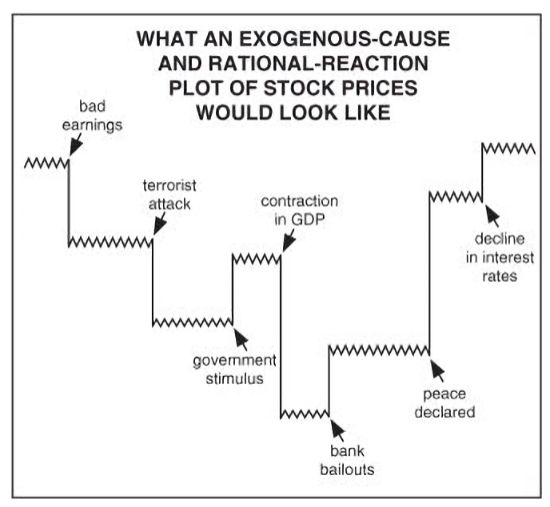Markets go where they go. The news is just rationalization.
By Elliott Wave International
As Elliott Wave International has noted many times, the mainstream financial press always tries to find a reason for a given trading day’s stock market action.
In other words, if stocks happen to be up for the day, many financial journalists will say it was because of this or that “positive” news. If stocks happen to be down for the day, you got it, these journalists will ignore the positive news and search for something “negative” that happened in the country or world and say that was the reason stocks went down.
Sometimes, the mainstream financial press will use the same “reason” to explain both up and down market action. For instance, on April 22, when the Dow Industrials closed lower by more than 300 points, a major headline said:
Dow closes more than 300 points lower following reports of Biden eyeing capital gains tax hike
Here’s what was so ironic: The very next day, as the Dow was trading up for the day by triple digits, the same news outfit ran this headline (April 23):
Dow rebounds 250 points led by banks and tech as market shrugs off higher tax fears
What you need to know is that news does not drive the trend of stock market prices.
If that was the case, the stock market’s price pattern would look something like this illustration, which is from Robert Prechter’s 2017 book, The Socionomic Theory of Finance. As the book says:

Figure 1 is an idealized representation showing what would be the presumed effects on overall stock prices of [this sample of news items notated within the figure].
Under this causal model, such events would–rationally and objectively–effect a change in overall stock prices.
The problem is, this depiction does not match empirics. That is not how overall stock prices behave.
The factor that really drives the trend of stock market prices is investor psychology, which unfolds as Elliott waves on a price chart.
These waves unfold in repetitive patterns at all sizes of trend. That means that the price patterns you see on an hourly or daily chart are also found on weekly and monthly charts.
Because these patterns are repetitive, they are predictable!
As Elliott Wave Principle: Key to Market Behavior, the Wall Street classic by Frost & Prechter, says:
The Wave Principle is governed by man’s social nature, and since he has such a nature, its expression generates forms. As the forms are repetitive, they have predictive value.
Sometimes the market appears to reflect outside conditions and events, but at other times it is entirely detached from what most people assume are causal conditions. The reason is that the market has a law of its own. It is not propelled by the external causality to which one becomes accustomed in the everyday experiences of life. The path of prices is not a product of news. …
The market’s progression unfolds in waves.
You can read the entire online version of the book for free by becoming a member of Club EWI, the world’s largest Elliott wave educational community (approximately 350,000 members). Club EWI is free to join and allows you free access to a wealth of Elliott wave resources on financial markets, investing and trading.
Follow this link to get started: Elliott Wave Principle: Key to Market Behavior — free access.
This article was syndicated by Elliott Wave International and was originally published under the headline Capital Gains Tax Hike News: Was It REALLY to Blame for Sell-off?. EWI is the world’s largest market forecasting firm. Its staff of full-time analysts led by Chartered Market Technician Robert Prechter provides 24-hour-a-day market analysis to institutional and private investors around the world.
Speak Your Mind